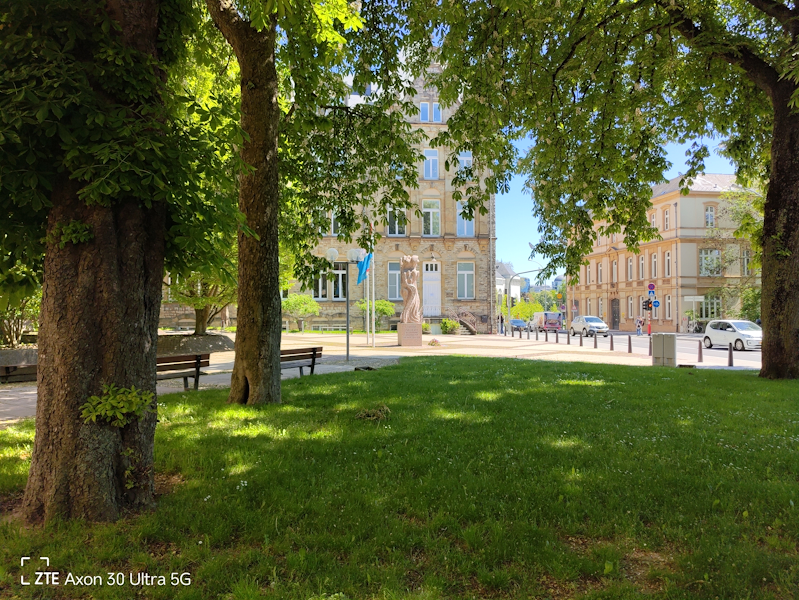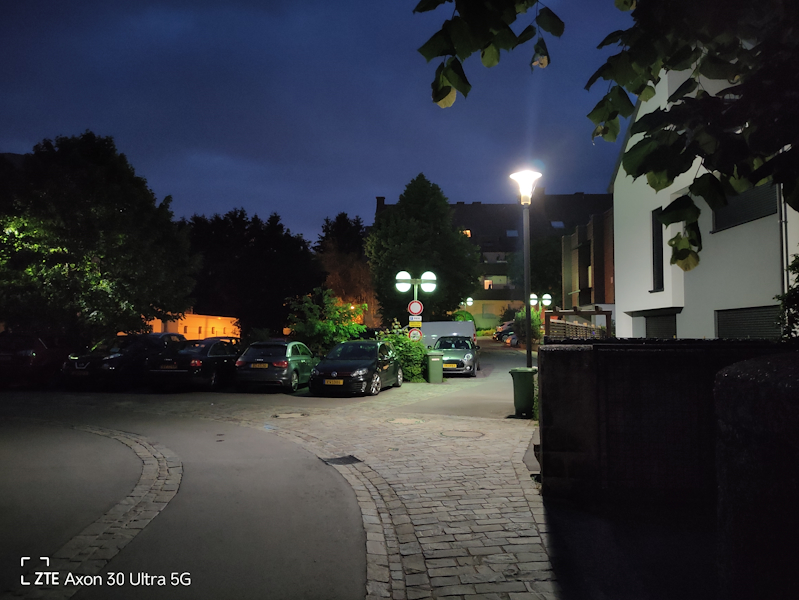The ZTE Axon 30 Ultra Review - Something Surprisingly Different
by Andrei Frumusanu on July 30, 2021 8:00 AM EST- Posted in
- Mobile
- Smartphones
- ZTE
- Axon 30 Ultra
Camera - Recap
The camera setup of the Axon 30 Ultra is quite peculiar and special, in that it doesn’t really match anything else in the market right now. As with the other recent reviews, we dove deeper into the phone’s camera several weeks ago in our much more extensive flagship camera review article, so for a lot more samples and discussion, I’d recommend reading that piece:
The one thing that makes the Axon 30 Ultra quite weird from other phones is the fact that it has a secondary wide-angle lens with a focal range of 31mm – just a little bit longer than the 26mm equivalent “main” camera sensor. ZTE calls this module a “portrait” lens, although it really doesn’t have the equivalent focal range of a typical portrait lens at >50mm.
Except for the 8MP telephoto module, all other modules on the Axon 30 Ultra are 64MP quad-Bayer units that bin down to 16MP, so it’s actually generally a little above the normal 12MP results you’d see from contemporary phones.

[ Axon 30 Ultra ]
[ Mi 11 Ultra ] [ Mi 11 ]
[ S21U(S) ] [ S21U(E) ]
[ OnePlus 9 Pro ]
[ S21(E) ] [ iPhone 12 Pro ] [ Pixel 5 ]
[ X-T30 ( ) ( ) ]
In our full camera review article, the one thing that stood our about the Axon 30 Ultra is that the phone’s camera processing is punching quite above its weight compared to many other flagship devices in the market, resulting in quite natural looking tone curves through most scenarios.
The phone’s telephoto module which has a 5x optical module at a 123mm equivalent focal length allows for quite competitive zoomed in shots, notably higher quality than any other phone that doesn’t have a periscope optics camera setup. While it doesn’t compete with the much larger S20/S21 Ultra or the Mi 11 Ultra’s models, it offers something that’s above the norm.

[ Axon 30 Ultra ]
[ Mi 11 Ultra ] [ Mi 11 ]
[ S21U(S) ] [ S21U(E) ]
[ OnePlus 9 Pro ]
[ S21(E) ] [ iPhone 12 Pro ] [ Pixel 5 ]
[ X-T30 ( ) ]
In terms of HDR, although the camera does have a hardware disadvantage due to the higher resolution, ZTE’s processing was most of the time able to get quite good results. While never being the best, it tended always to get colour temperature right and keep a more lifelike representation of shadows and highlights. The one weakness that tends to creep in is that the phone sometimes feels a little washed out and lacking in colour saturation.

[ Axon 30 Ultra - ]
[ Mi 11 Ultra - ] [ Mi 11 - ]
[ S21(E) - ]
[ S21U(S) - ] [ S21U(E) - ]
[ OnePlus 9 Pro - ]
[ iPhone 12 Pro ] [ Pixel 5 - ]
[ X-T30 ( ) ]
In low-light scenarios, the Axon 30 Ultra’s sensor struggle quite a bit, but the phone does have a night mode that is able to recover light. While the phone’s cameras are usable in this mode, the processing tends very much flatten out textures completely which represents the phone biggest weakness in low-light. Because of this, it’s only really an average performer.
Overall Camera Conclusion
The ZTE Axon 30 Ultra was actually a quite surprising camera experience for me because the device had a unique type of processing in daylight shots that appeared extremely natural and most of the time very much competitive with a lot of the flagship cameras out there in the market. While texture details weren’t always great, colour accuracy and HDR tone mapping was generally great, which is quite weird as that’s always the aspects that are the hardest to get right in a camera system.
In low-light, the phone isn’t quite as competitive as the night mode processing literally falls flat in terms of textures, I hope ZTE can somehow improve the algorithm and achieve better results in the future.
Hardware-wise, it’s a very versatile shooter, however as much as ZTE tries to rationalise the secondary 31mm camera module, the practical uses just aren’t there – the main camera module has a much superior sensor and OIS, and the focal range difference is so minor that I wish this module just weren’t there at all.
Overall, the Axon 30 Ultra is a surprisingly capable shooter. While it’s definitely not at the levels of the best of what we see from the competition, it has aspects where it can very much hold its own weight, and results in a very usable camera experience in this price segment.











25 Comments
View All Comments
warisz00r - Friday, July 30, 2021 - link
"somewhat particular device"coburn_c - Saturday, July 31, 2021 - link
From across the specific ocean.dotjaz - Friday, July 30, 2021 - link
"Surprisingly Different"And unsurprisingly lacking on software support.
Seriously, it probably cost an extra $100000 to offer one more update and one extra year of security. That's maybe $1 per phone. Just charge the extra dollar or five.
sabot00 - Friday, July 30, 2021 - link
No way. An extra year of support is easily 5-10 million USD. Even if dev work was free, the cost of carrier certification is huge.linuxgeex - Friday, July 30, 2021 - link
Except that with project treble all the components which are involved in carrier certification do not change with security updates. Carrier re-certification revolves around the baseband, which rarely changed even before project treble.jvl - Saturday, July 31, 2021 - link
So charge 5 USD more. Or 10 USD more. Which is exactly what OP proposed.. (Nonwithstanding below's comment)Samus - Sunday, August 1, 2021 - link
Agreed. If PR honestly pitched these things with guaranteed software support for 3-4 years I don't think an extra $5-$10 would phase anybody, especially since nobody (other than Apple I suppose) does that.Silver5urfer - Friday, July 30, 2021 - link
Why should anyone buy this device which has literally same lack of feature set from HW perspective = no 3.5mm jack, no SD card slot, questionable servicing support and OS support. For that cash I'd get a Sony Xperia 5 Mark III. Which has everything this phone lacks and even better Front display due to no hole or such.neothe0ne - Friday, July 30, 2021 - link
Agreed. Xperia 5 III is also likely to end up being supported on AT&T's network from February 2022 onward. I don't see any ZTE Axon on the list so far.https://www.att.com/idpassets/images/support/wirel...
drajitshnew - Friday, July 30, 2021 - link
@silversurfer I absolutely agree about microSD cards and 3.5mm Jack. I bought my currently phone because it had a flagship-eque chipset and 3.5mm Jack support.I thought that 256GB flash would alleviate the need for micro SD. As I described above though it required a factor reset and 2 (two) complete re-imaging. And I think it be would have been a LOT less painful if it had a microSD. At the same time I guess we as consumers have to accept